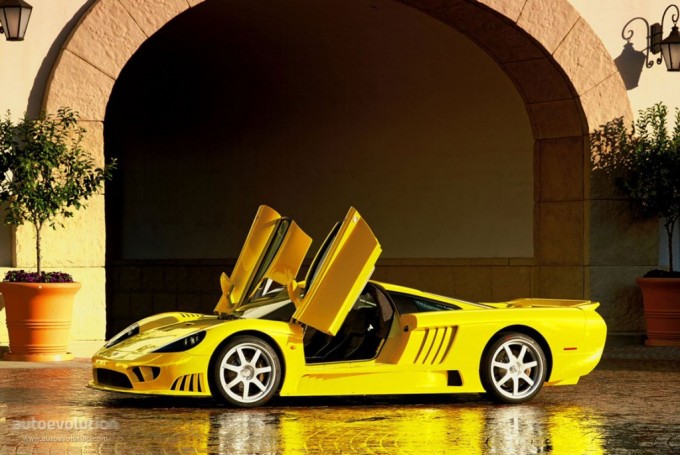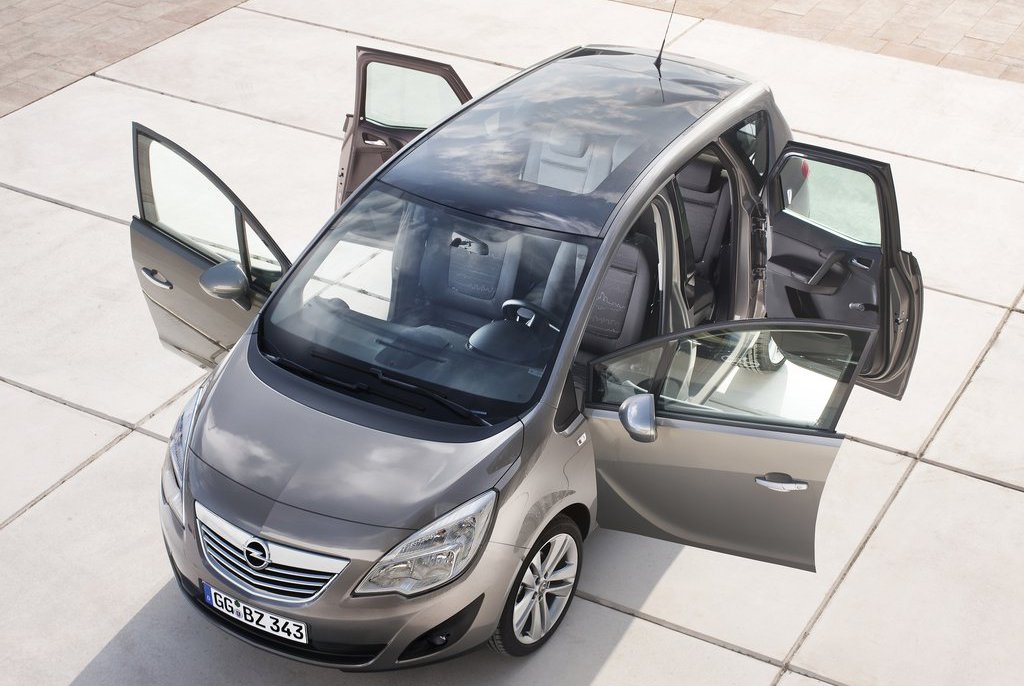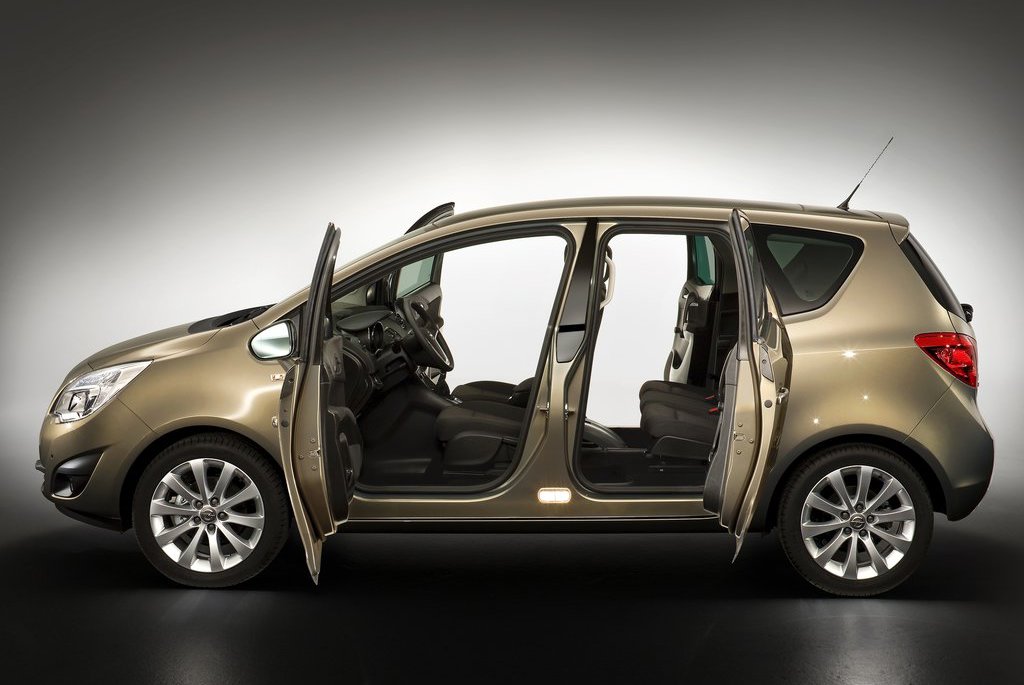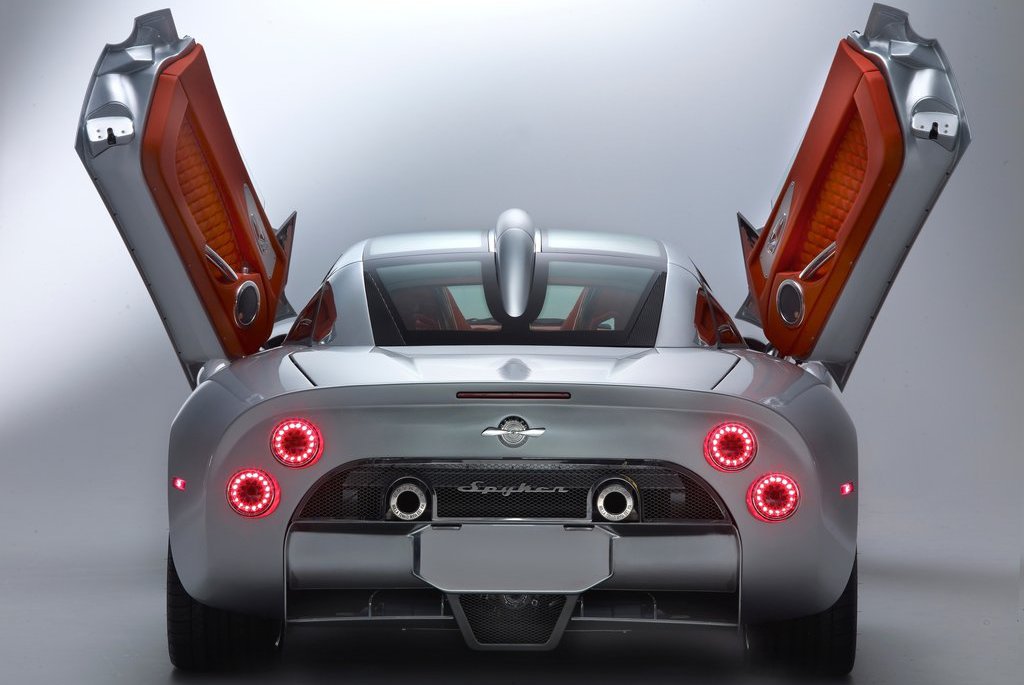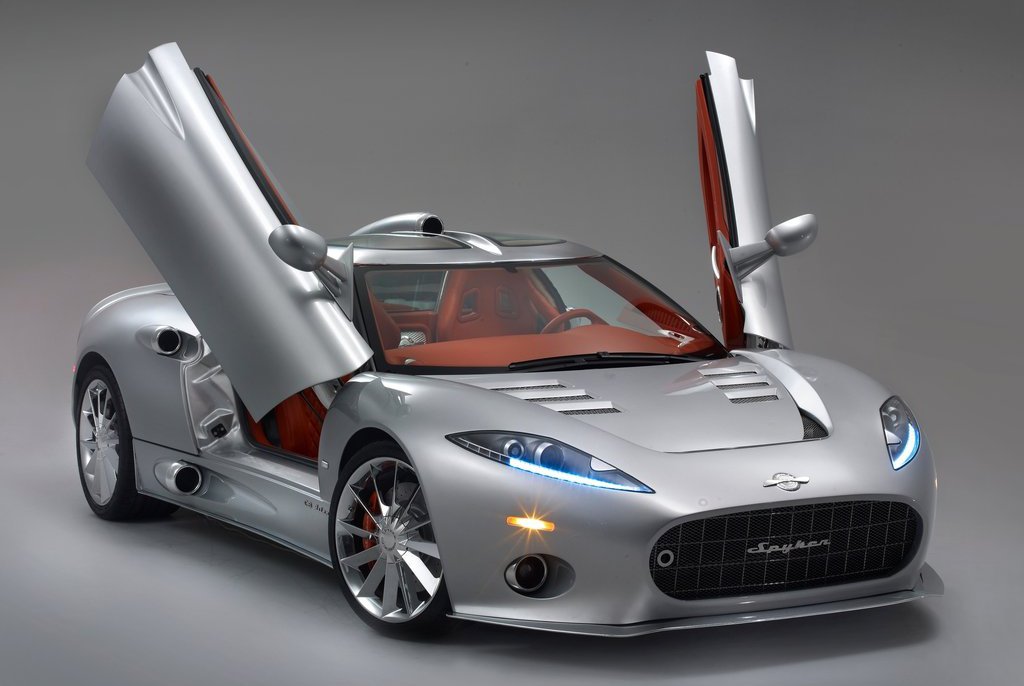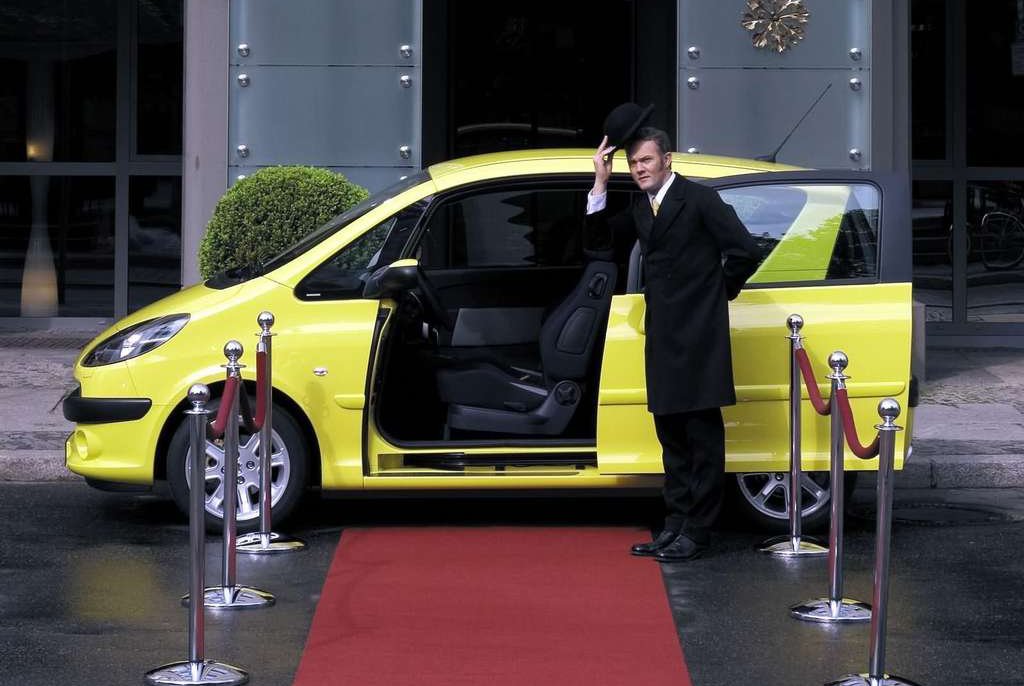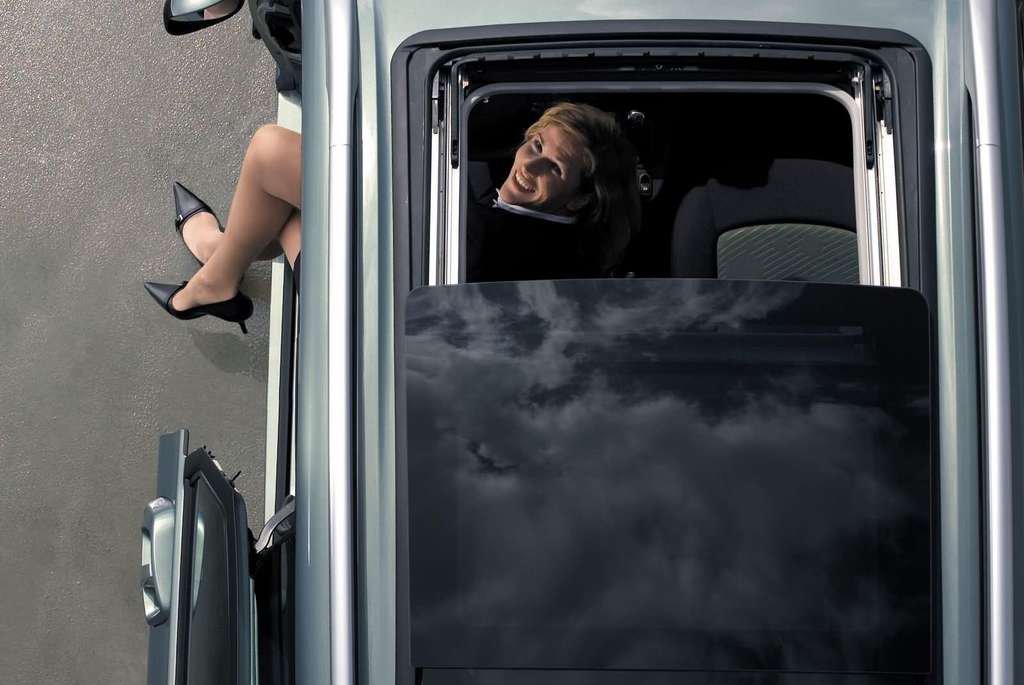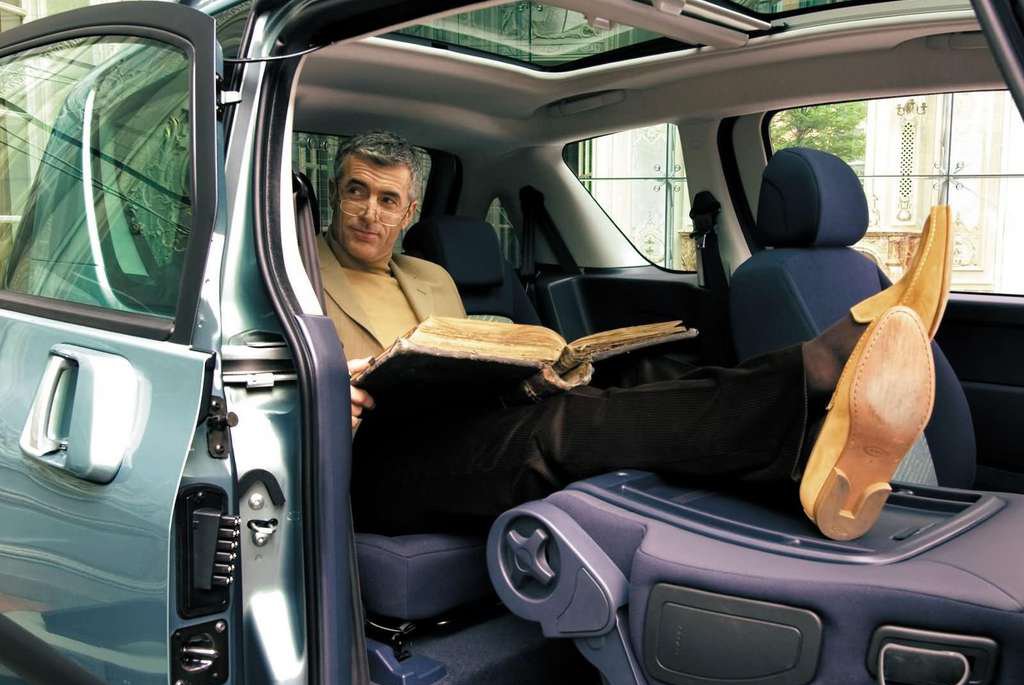It’s no surprise that today’s carmakers struggle to innovate and the fact that all kinds of technologies come to life each year is only a natural consequence.
Well, in their attempt to attract more buyers, car manufacturers around the world tried to focus on every single part of a specific car, be it engine, wheels, interior quality or... doors.
That’s right, doors are playing a key role nowadays and, what’s more, there are some companies around there planning to steal the lion’s share with the help of various door technologies. And the best example is the Blue Oval, as Ford recently introduced the new B-MAX, a brand new model that combines a conventional door system and sliding rear doors with no B-pillar for easy access.
Getting back to today’s subject, doors have evolved a lot in the last decades and although conventional doors are still the most popular these days, there are multiple other exotic designs out there that gain a lot of attention.
Although it’s pretty difficult to group them in different categories, there are seven major door types, or six if we don’t count the conventional ones: butterfly doors, suicide doors, gull-wing doors, scissor doors, sliding doors and canopy doors. We won’t go too far into history and analyze their pros and cons, but instead we’re going to present their structure and name a few cars using them.
Butterfly Doors
As you may guess just by reading the name, butterfly doors are mostly addressed supercars and exotic models capable of developing a breathtaking performance. In other words, butterfly doors also contribute to the aggressive image such a supercar boast and are less focused on the way people get inside and outside the car.
Very similar to scissor doors, the butterfly system allows the doors to move outwards and then up, which indeed improves the access. Still, they can also affect the interior space, but this isn’t quite of the main focus for the aforementioned models.
A few models using butterfly doors are Enzo Ferrari, Saleen S7, Mercedes Benz SLR McLaren and McLaren F1, although some of them use rely on slightly modified systems.
This is the Saleen S7 unveiled in 2000. For more information on this model, check out this link.
Suicide Doors
Although they use such a fancy name, suicide doors are actually addressed to more conventional cars and are even in production nowadays on more or less popular models. The best example is the new Opel Meriva, which uses the so-called “Flex Door” system, more like a suicide door layout with minor modifications.
In just a few words, suicide doors are actually those that hinge from the rear end of the door, which means they open in the opposite direction. Although it may sound a bit complicated, have a look at the next photos to get a quick idea on the whole system.
Wondering why they’re called “suicide”? Various sources are pointing to the layout, hinting that passengers who attempted to close such a door while the car was moving were committing suicide because they had to resist the air flow. In most cases, passengers who tried to close the door got pulled outside and killed. Seems legit.
Cars using suicide doors include the aforementioned Opel Meriva, Rolls Royce Phantom, Spyker D12, the 1940 Peugeot 601 and the 2011 Mazda RX-8.
Opel Meriva was officially unveiled at the 2010 Geneva Motor Show. Here is the complete spec list.
Gullwing Doors
It’s almost impossible to talk about gullwing doors and not mention the name of German car manufacturer Mercedes-Benz. First launched on the 1952 Mercedes-Benz 300SL designed for races, gullwing doors are actually hinged at the roof and opening upwards.
Inspired from seagull wings, this exotic design not only contributes to a more aggressive look, but it’s also very useful in crowded cities, where parking space is very limited.
Obviously, among the models that relied on gullwing doors, it’s worth mentioning the new Mercedes-Benz SLS AMG, Gumpert Apollo, DeLorean DMC-12 and Pagani Huayra.
Short presentation of Mercedes-Benz SLS AMG and its door system by Gordonÿ Wagner, Head of Design at Mercedes-Benz.
Scissor Doors
If you’re a car enthusiast, chances are that you love Lamborghini. And if you love Lamborghini, you definitely know what’s that a scissor door.
Although Lamborghini used this design for a long period of time, it’s actually another Italian manufacturer that introduced scissor doors. Alfa Romeo was the first brand to present such a layout on the 1968 Carabo concept, which was based on a design created by Marcello Gandini.
The whole system is quite simple because scissor doors use a typical hinge mounted at the front of the door, but instead of rotating outwards as it happens in the case of a conventional door, they go up, using a vertical configuration.
Obviously useful in tight parking spaces, scissor doors can be seen on Lamborghini Aventador, Diablo, Murcielago and Reventon, Spyker C8 and C12 Zagato, Bugatti EB110 and Honda HSC.
Spyker C8 uses an Audi V8 4.2-liter engine that produces 400 hp. Click here for full info.
Sliding Doors
There’s no doubt you know what’s that a sliding door and you most likely see one every day on minivans or commercial vehicles which use such a configuration for easy access.
The doors are in most cases mounted on a track, so it’s enough to slide it horizontally to open any of them. What’s more interesting is that car manufacturers have adopted sliding doors for passenger cars as well, mostly in an attempt to improve passenger access and make our lives easier when fighting with the lack of parking spaces.
Renault Kangoo is one of the models that used sliding doors, so is Peugeot 1007, Citroen C8, Chrysler Voyager and Kia Sedona, although some of these adopted a more or less altered configuration.
Peugeot 1007 and its innovative door system especially designed for easy access.
Canopy Doors
If you don’t know what a canopy door is, it’s enough to think about an aircraft to get a hint. A canopy, be it from an aircraft or a car, is some sort of door that is placed on top of vehicle and lifts up, opening vertically for almost impossible access.
While it’s a nightmare to drive a car with such a door configuration if you’re wearing a tux, canopy doors are great in crowded cities where you can basically park at a single inch away from another car, without the need for room to open doors. Just jump on your car (literally), open the canopy and that’s it.
If you’re wondering who on Earth would use such a layout, well... the guys at Volkswagen did it with the 1-liter concept a few years ago. Ferrari also tried to innovate in 1970 with the Modulo concept, while Saab attempted a similar configuration 2006 with the Aero-X concept.
Saab Aero-X concept is one of the models that adopted a canopy door system. It never reached production though.
That being said, it’s only up to you and, in most cases, up to your bank account, which kind door layout you want to have. Conventional doors remain the most affordable choice for the time being, almost it’s obvious that many of the aforementioned configurations can help us a lot when it comes to fighting traffic congestion and the lack of parking lots. Canopy doors anyone?
Very similar to scissor doors, the butterfly system allows the doors to move outwards and then up, which indeed improves the access. Still, they can also affect the interior space, but this isn’t quite of the main focus for the aforementioned models.
A few models using butterfly doors are Enzo Ferrari, Saleen S7, Mercedes Benz SLR McLaren and McLaren F1, although some of them use rely on slightly modified systems.
This is the Saleen S7 unveiled in 2000. For more information on this model, check out this link.
Suicide Doors
Although they use such a fancy name, suicide doors are actually addressed to more conventional cars and are even in production nowadays on more or less popular models. The best example is the new Opel Meriva, which uses the so-called “Flex Door” system, more like a suicide door layout with minor modifications.
In just a few words, suicide doors are actually those that hinge from the rear end of the door, which means they open in the opposite direction. Although it may sound a bit complicated, have a look at the next photos to get a quick idea on the whole system.
Wondering why they’re called “suicide”? Various sources are pointing to the layout, hinting that passengers who attempted to close such a door while the car was moving were committing suicide because they had to resist the air flow. In most cases, passengers who tried to close the door got pulled outside and killed. Seems legit.
Cars using suicide doors include the aforementioned Opel Meriva, Rolls Royce Phantom, Spyker D12, the 1940 Peugeot 601 and the 2011 Mazda RX-8.
Opel Meriva was officially unveiled at the 2010 Geneva Motor Show. Here is the complete spec list.
Gullwing Doors
It’s almost impossible to talk about gullwing doors and not mention the name of German car manufacturer Mercedes-Benz. First launched on the 1952 Mercedes-Benz 300SL designed for races, gullwing doors are actually hinged at the roof and opening upwards.
Inspired from seagull wings, this exotic design not only contributes to a more aggressive look, but it’s also very useful in crowded cities, where parking space is very limited.
Obviously, among the models that relied on gullwing doors, it’s worth mentioning the new Mercedes-Benz SLS AMG, Gumpert Apollo, DeLorean DMC-12 and Pagani Huayra.
Short presentation of Mercedes-Benz SLS AMG and its door system by Gordonÿ Wagner, Head of Design at Mercedes-Benz.
Scissor Doors
If you’re a car enthusiast, chances are that you love Lamborghini. And if you love Lamborghini, you definitely know what’s that a scissor door.
Although Lamborghini used this design for a long period of time, it’s actually another Italian manufacturer that introduced scissor doors. Alfa Romeo was the first brand to present such a layout on the 1968 Carabo concept, which was based on a design created by Marcello Gandini.
The whole system is quite simple because scissor doors use a typical hinge mounted at the front of the door, but instead of rotating outwards as it happens in the case of a conventional door, they go up, using a vertical configuration.
Obviously useful in tight parking spaces, scissor doors can be seen on Lamborghini Aventador, Diablo, Murcielago and Reventon, Spyker C8 and C12 Zagato, Bugatti EB110 and Honda HSC.
Spyker C8 uses an Audi V8 4.2-liter engine that produces 400 hp. Click here for full info.
Sliding Doors
There’s no doubt you know what’s that a sliding door and you most likely see one every day on minivans or commercial vehicles which use such a configuration for easy access.
The doors are in most cases mounted on a track, so it’s enough to slide it horizontally to open any of them. What’s more interesting is that car manufacturers have adopted sliding doors for passenger cars as well, mostly in an attempt to improve passenger access and make our lives easier when fighting with the lack of parking spaces.
Renault Kangoo is one of the models that used sliding doors, so is Peugeot 1007, Citroen C8, Chrysler Voyager and Kia Sedona, although some of these adopted a more or less altered configuration.
Peugeot 1007 and its innovative door system especially designed for easy access.
Canopy Doors
If you don’t know what a canopy door is, it’s enough to think about an aircraft to get a hint. A canopy, be it from an aircraft or a car, is some sort of door that is placed on top of vehicle and lifts up, opening vertically for almost impossible access.
While it’s a nightmare to drive a car with such a door configuration if you’re wearing a tux, canopy doors are great in crowded cities where you can basically park at a single inch away from another car, without the need for room to open doors. Just jump on your car (literally), open the canopy and that’s it.
If you’re wondering who on Earth would use such a layout, well... the guys at Volkswagen did it with the 1-liter concept a few years ago. Ferrari also tried to innovate in 1970 with the Modulo concept, while Saab attempted a similar configuration 2006 with the Aero-X concept.
Saab Aero-X concept is one of the models that adopted a canopy door system. It never reached production though.
That being said, it’s only up to you and, in most cases, up to your bank account, which kind door layout you want to have. Conventional doors remain the most affordable choice for the time being, almost it’s obvious that many of the aforementioned configurations can help us a lot when it comes to fighting traffic congestion and the lack of parking lots. Canopy doors anyone?


